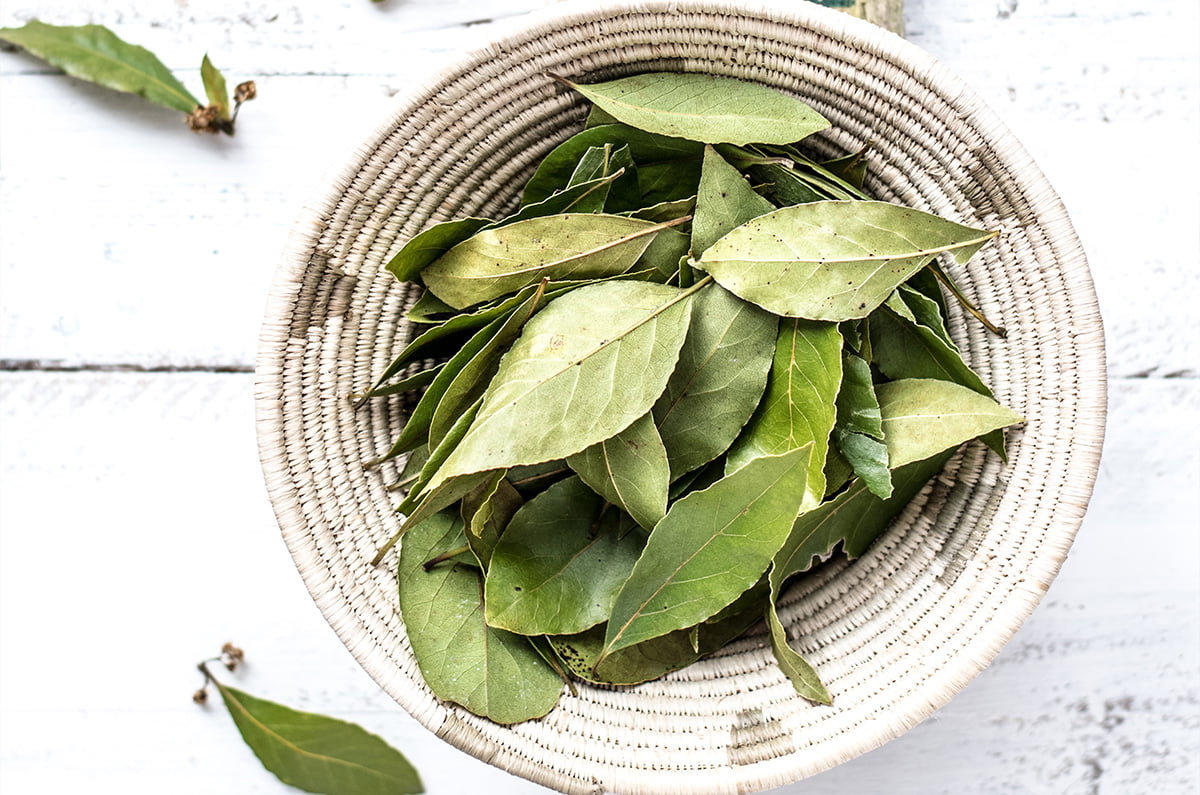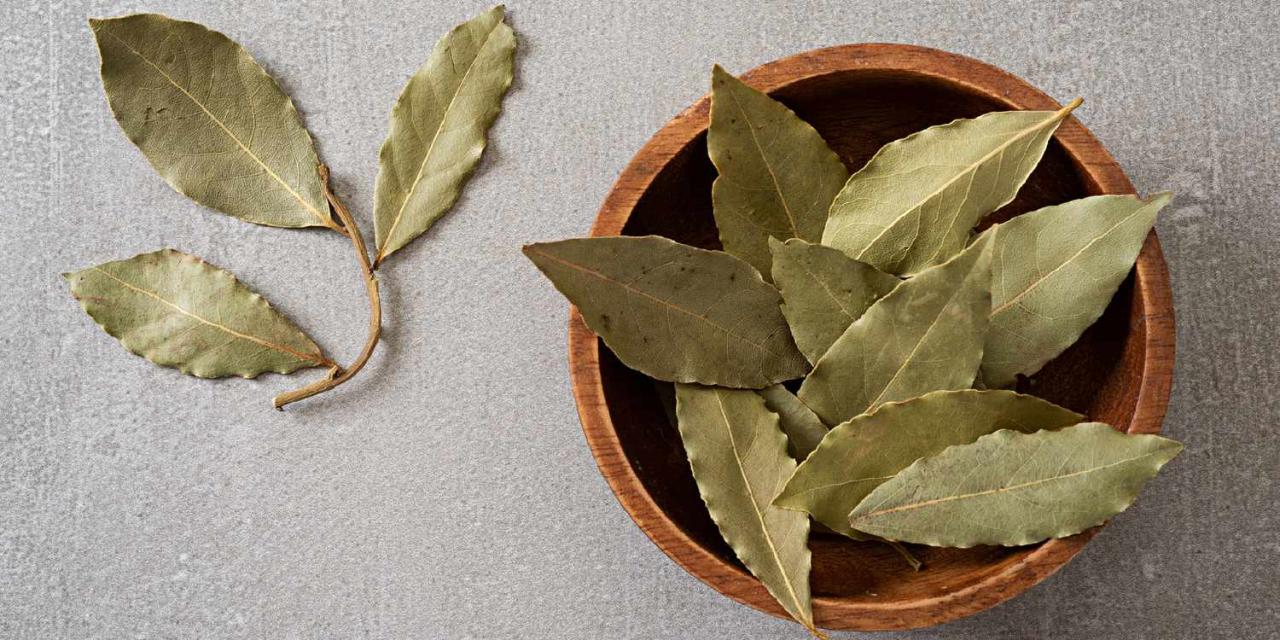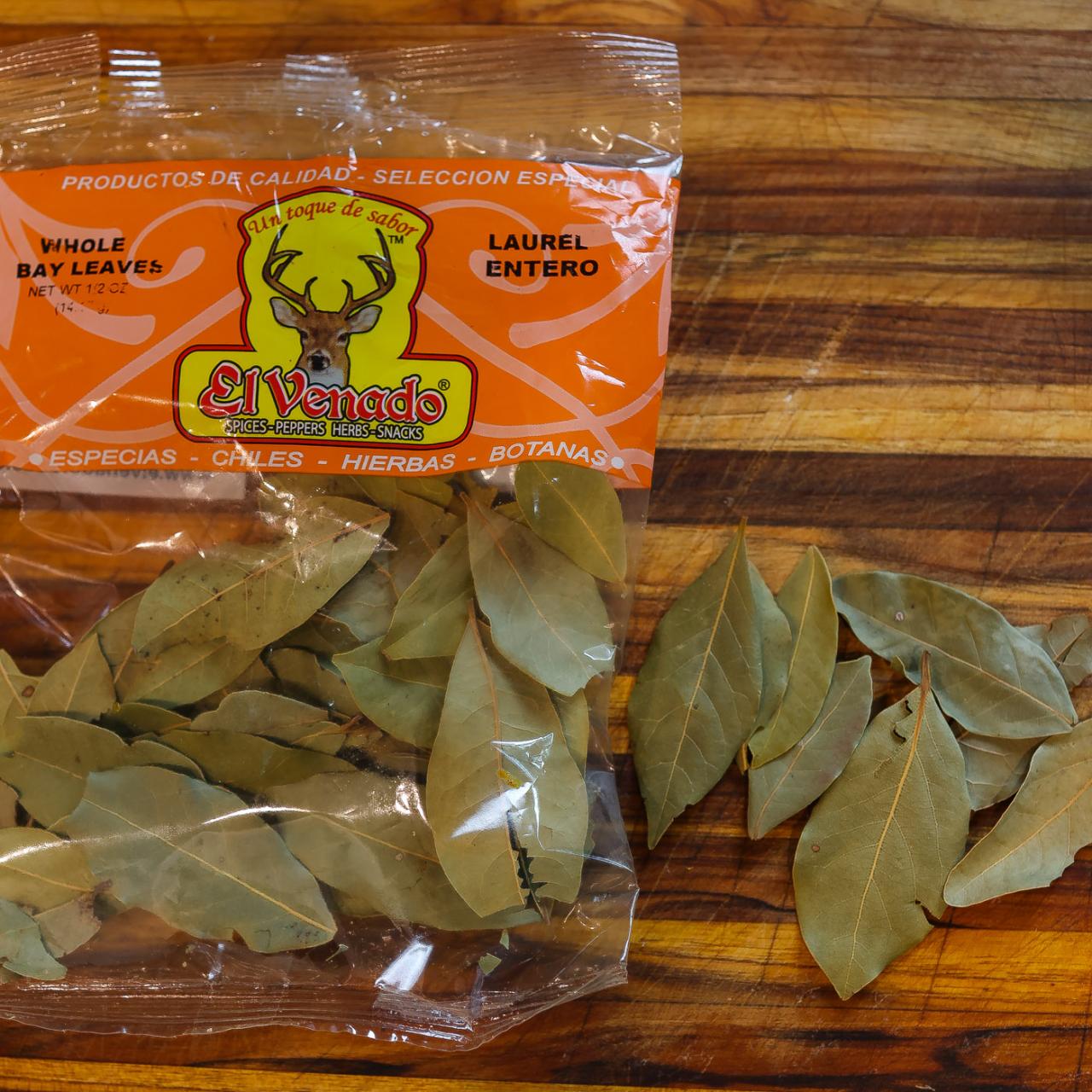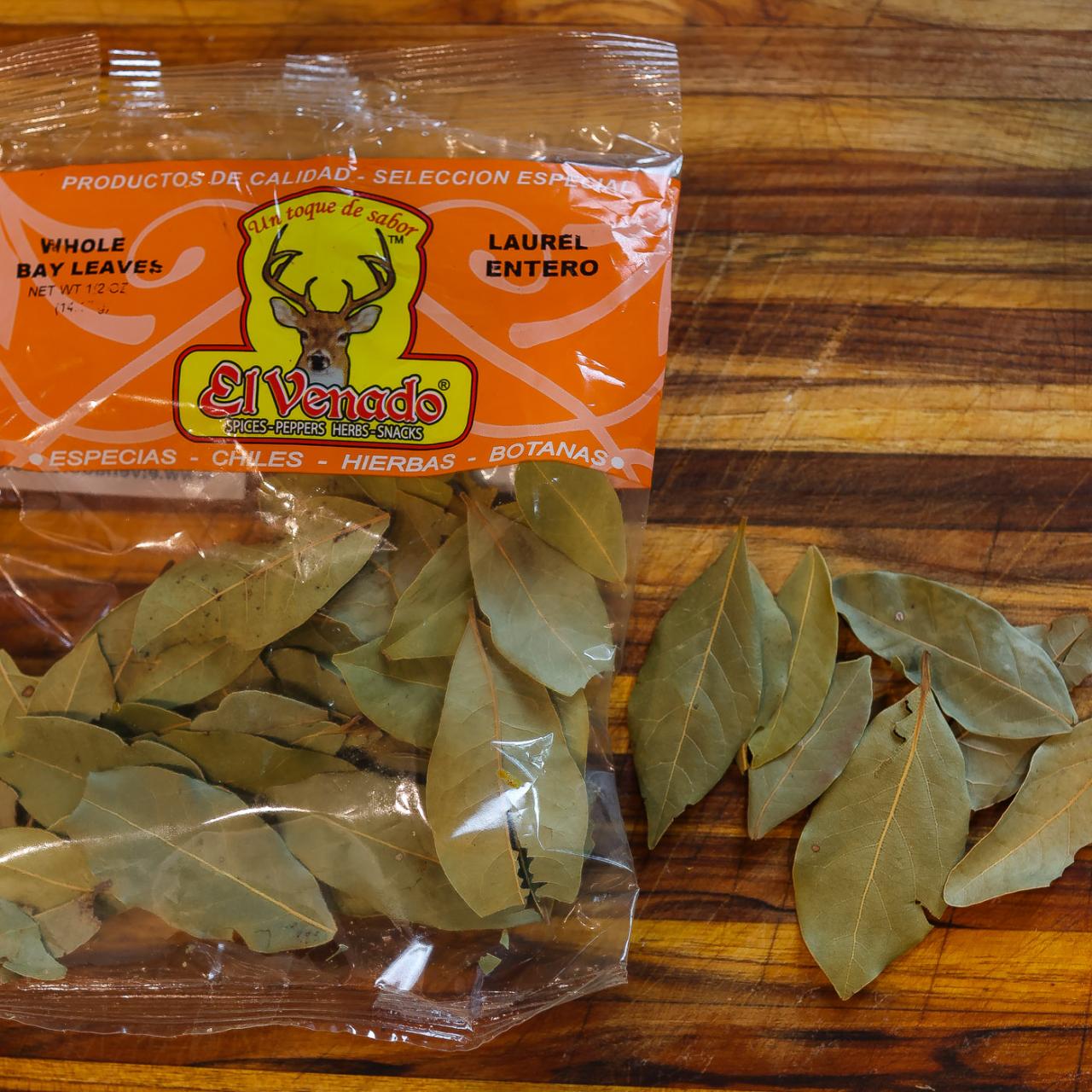The Ultimate Guide to Finding the Perfect Bay Leaf Substitute sets the stage for this enthralling narrative, offering readers a glimpse into a story that is rich in detail with search engine journal author style and brimming with originality from the outset.
The aromatic world of cooking often revolves around the subtle, yet powerful, presence of bay leaves. These leaves, with their earthy and slightly bitter notes, elevate dishes from ordinary to extraordinary. But what happens when you find yourself without a bay leaf?
Fear not, culinary adventurers! This guide will equip you with the knowledge to navigate the world of bay leaf substitutes, ensuring your dishes retain their depth and complexity.
From the classic combination of bay leaves and tomato sauce to the comforting aroma of a pot roast simmering with bay leaves, these versatile leaves add a unique depth of flavor that is hard to replicate. However, circumstances may arise where a bay leaf is unavailable, and you need to find a suitable replacement.
This guide will explore the reasons behind needing a substitute, delve into the characteristics of bay leaves that need to be replicated, and offer a comprehensive list of alternatives, each with its own unique flavor profile and best uses. We will also provide tips for using these substitutes effectively, ensuring that your dishes retain their intended flavor balance.
Introduction

Bay leaves, the dried leaves of the bay laurel tree, are a staple ingredient in many cuisines worldwide. They contribute a unique, earthy, and slightly bitter flavor that elevates dishes from simple to sophisticated. While bay leaves are often used whole, their flavor is best extracted through simmering in liquids like soups, stews, sauces, and stocks.
This process releases the essential oils, resulting in a subtle yet profound taste that adds depth and complexity to various culinary creations.
Examples of Dishes Commonly Using Bay Leaves
Bay leaves are a versatile ingredient that finds its way into numerous dishes. Some of the most common examples include:
- Soups and Stews:Bay leaves are essential for adding depth and warmth to soups like French onion soup, minestrone, and beef stew. Their earthy flavor complements the richness of the broth and enhances the overall taste.
- Stocks and Broths:When making chicken, beef, or vegetable stocks, bay leaves are often added to enhance the flavor and aroma. They impart a subtle depth that elevates the stock’s richness and complexity.
- Sauces:From classic béarnaise sauce to rich tomato sauce, bay leaves add a subtle complexity and depth of flavor. They complement the other ingredients and create a more balanced and well-rounded taste.
- Beans and Legumes:Bay leaves are often used in dishes featuring beans and legumes, such as baked beans, chili, and lentil soup. Their earthy flavor balances the richness of the beans and enhances the overall taste.
- Meat Dishes:Bay leaves are often used in marinades for meat, adding a subtle complexity and depth of flavor. They are also commonly used in roasted meat dishes, especially poultry and pork, where they enhance the meat’s natural flavors.
Understanding Bay Leaf Substitutes: The Ultimate Guide To Finding The Perfect Bay Leaf Substitute
Bay leaves, with their distinctive aroma and flavor, are a staple in many cuisines. While they are commonly used in various dishes, there are instances where a substitute might be needed. Understanding the key characteristics of bay leaves and the reasons for seeking alternatives is crucial for achieving the desired taste in your culinary creations.
Reasons for Using Bay Leaf Substitutes
The need for bay leaf substitutes often arises from various factors, including:
- Availability:Bay leaves might not be readily available in certain regions or during specific seasons.
- Dietary Restrictions:Some individuals may have allergies or sensitivities to bay leaves, necessitating alternative options.
- Flavor Preferences:Different cuisines or personal preferences might call for alternative flavors that are not as pronounced as bay leaves.
- Recipe Requirements:Some recipes might specifically call for substitutes due to the desired flavor profile or the absence of bay leaves.
Flavor Profiles of Bay Leaf Substitutes
Bay leaf substitutes offer a range of flavor profiles, each with its own unique characteristics. While some substitutes might closely resemble the taste of bay leaves, others provide distinct flavors that can enhance or alter the overall dish.
- Dried Herbs:Dried herbs like thyme, rosemary, and oregano offer a similar earthy and slightly bitter taste to bay leaves. However, they often have a more pronounced flavor and should be used in moderation.
- Spice Blends:Pre-made spice blends, such as curry powder or herbes de Provence, can provide a complex flavor profile that includes bay leaf-like notes along with other spices.
- Other Leaves:Certain leaves, like laurel leaves or even lemon leaves, can offer a similar aroma and flavor to bay leaves, albeit with slight variations.
Best Bay Leaf Substitutes

While bay leaves are a staple in many cuisines, finding a suitable substitute can be necessary if you don’t have them on hand or if you have an allergy. Thankfully, various herbs and spices can mimic the earthy, slightly bitter, and slightly sweet flavor profile of bay leaves.
While you’re busy perfecting your culinary skills with our “Ultimate Guide to Finding the Perfect Bay Leaf Substitute,” don’t forget to take a moment to refresh your outdoor space with a vibrant lawn. If you’re planning to sow new grass seed, be sure to check out The Ultimate Tips for Growing Grass Seed Successfully in September for expert advice on achieving a lush, healthy lawn.
With the right guidance, you’ll be enjoying the benefits of a beautiful lawn in no time, just like you’ll be enjoying the flavors of your dishes with the perfect bay leaf substitute.
Let’s explore some of the best alternatives to bay leaves.
Best Bay Leaf Substitutes, The Ultimate Guide to Finding the Perfect Bay Leaf Substitute
The following table lists some of the best substitutes for bay leaves, along with their flavor profiles, recommended uses, and additional notes.
Substitute |
Flavor Profile |
Best Uses |
Notes |
|---|---|---|---|
Dried Thyme |
Earthy, slightly minty, with hints of citrus |
Soups, stews, roasts, marinades |
Use a pinch or two of dried thyme for every bay leaf. Thyme works particularly well with chicken, pork, and vegetables. |
Rosemary |
Woody, piney, slightly camphoraceous |
Roasted meats, especially lamb, poultry, and vegetables |
Rosemary complements the flavors of garlic and onion. Use a sprig or two of fresh rosemary or a teaspoon of dried rosemary for each bay leaf. |
Sage |
Earthy, slightly peppery, with a hint of bitterness |
Stuffings, poultry, pork, and pasta sauces |
Sage pairs well with butter and cheese. Use a pinch or two of dried sage for every bay leaf. |
Oregano |
Slightly bitter, with a pungent, earthy flavor |
Tomato-based sauces, pizzas, and Italian dishes |
Oregano has a strong flavor, so use it sparingly. Start with a pinch or two for every bay leaf and adjust to taste. |
Marjoram |
Mild, slightly sweet, with a hint of lemon |
Chicken, pork, and fish dishes, as well as soups and stews |
Marjoram is a good substitute for bay leaves in dishes where a delicate flavor is desired. Use a pinch or two of dried marjoram for every bay leaf. |
Using Bay Leaf Substitutes Effectively
Bay leaf substitutes can add a similar depth of flavor to your dishes, but it’s important to understand how to use them effectively to ensure optimal results. The intensity of the flavor and the cooking time may vary depending on the substitute chosen.
Adjusting Cooking Times
The cooking time for bay leaf substitutes can differ from that of traditional bay leaves.
- Dried herbs:Dried herbs, like thyme, rosemary, and oregano, are generally more concentrated than fresh herbs. They should be added earlier in the cooking process to allow their flavors to develop fully. For example, when using dried herbs in a simmering sauce, add them at the beginning of the cooking process, rather than towards the end.
This allows the flavors to infuse the sauce over a longer period.
- Fresh herbs:Fresh herbs, like parsley, basil, and cilantro, are more delicate and have a shorter cooking time than dried herbs. Add them towards the end of the cooking process to preserve their freshness and aroma. For example, in a stir-fry, add fresh herbs during the last minute of cooking.
- Spice blends:Spice blends, like curry powder, garam masala, and Chinese five-spice powder, often contain a variety of ingredients, including dried herbs. The cooking time for spice blends will vary depending on the specific blend and the other ingredients it contains.
Follow the instructions on the spice blend package for optimal results.
Incorporating Substitutes into Different Cooking Methods
The method of incorporating bay leaf substitutes can vary depending on the cooking method.
While our “Ultimate Guide to Finding the Perfect Bay Leaf Substitute” focuses on culinary needs, a healthy herb garden can also be a source of delicious flavor. If you’re looking to boost your own herb garden’s growth, check out this guide on How to Get Your Rodgers Plant to Grow Faster and Healthier.
With a little care, you’ll be able to enjoy fresh herbs for your cooking and have a beautiful, thriving garden to boot.
- Simmering:When simmering sauces or soups, add dried herbs, spice blends, or fresh herbs at the beginning of the cooking process to allow the flavors to infuse the liquid. Stir occasionally to ensure even distribution of the flavors.
- Baking:For baking, add dried herbs, spice blends, or fresh herbs to the dry ingredients before mixing them with the wet ingredients. This allows the flavors to distribute evenly throughout the baked dish. For example, when baking a chicken dish, add dried thyme and rosemary to the dry ingredients before combining them with the wet ingredients.
- Roasting:For roasting, add dried herbs or spice blends to the ingredients before roasting. You can also use fresh herbs, but they may need to be added towards the end of the roasting process to prevent them from becoming too dry or burnt.
For example, when roasting vegetables, add dried oregano or thyme to the vegetables before roasting.
Adjusting the Amount of Substitute Used
The amount of bay leaf substitute you use will depend on the recipe and your desired intensity of flavor.
- Dried herbs:Use a smaller amount of dried herbs than you would use fresh herbs. For example, if a recipe calls for one bay leaf, you could use about 1/4 teaspoon of dried thyme or rosemary as a substitute.
- Fresh herbs:Use a larger amount of fresh herbs than you would use dried herbs. For example, if a recipe calls for one bay leaf, you could use about 1 tablespoon of fresh thyme or rosemary as a substitute.
- Spice blends:The amount of spice blend you use will depend on the specific blend and your desired level of spiciness. Start with a small amount and adjust to taste.
Recipes Featuring Bay Leaf Substitutes

Now that you have a solid understanding of the various substitutes for bay leaves, let’s dive into some recipes that showcase their unique flavors and versatility. These recipes will demonstrate how to effectively incorporate bay leaf substitutes into your culinary creations.
Recipes with Bay Leaf Substitutes
The following recipes highlight the use of bay leaf substitutes, demonstrating their ability to infuse dishes with distinct flavors and aromas.
- Classic Tomato Sauce with Thyme
- Ingredients:
- 2 tablespoons olive oil
- 1 onion, chopped
- 2 cloves garlic, minced
- 1 (28-ounce) can crushed tomatoes
- 1 teaspoon dried oregano
- 1/2 teaspoon dried thyme
- 1/4 teaspoon salt
- 1/4 teaspoon black pepper
- Instructions:
- Heat olive oil in a large saucepan over medium heat.
- Add onion and cook until softened, about 5 minutes.
- Stir in garlic and cook for 1 minute more.
- Add crushed tomatoes, oregano, thyme, salt, and pepper.
- Bring to a boil, then reduce heat and simmer for 30 minutes, stirring occasionally.
- Serve over pasta or use as a base for other dishes.
- Chicken and Mushroom Soup with Rosemary
- Ingredients:
- 1 tablespoon olive oil
- 1 onion, chopped
- 2 cloves garlic, minced
- 1 pound boneless, skinless chicken breasts, cut into 1-inch pieces
- 1 pound cremini mushrooms, sliced
- 4 cups chicken broth
- 1/2 teaspoon dried rosemary
- 1/4 teaspoon salt
- 1/4 teaspoon black pepper
- Instructions:
- Heat olive oil in a large pot over medium heat.
- Add onion and cook until softened, about 5 minutes.
- Stir in garlic and cook for 1 minute more.
- Add chicken and mushrooms and cook until chicken is browned, about 5 minutes.
- Pour in chicken broth, rosemary, salt, and pepper.
- Bring to a boil, then reduce heat and simmer for 20 minutes, or until chicken is cooked through.
- Remove chicken from the soup and shred it.
- Return shredded chicken to the soup and serve hot.
- Spiced Lentil Curry with Cardamom
- Ingredients:
- 1 tablespoon olive oil
- 1 onion, chopped
- 2 cloves garlic, minced
- 1 inch ginger, grated
- 1 teaspoon ground cumin
- 1 teaspoon ground coriander
- 1/2 teaspoon turmeric
- 1/4 teaspoon cayenne pepper
- 6 cardamom pods, lightly crushed
- 1 cup red lentils, rinsed
- 2 cups vegetable broth
- 1 (14-ounce) can diced tomatoes, undrained
- 1/2 cup chopped cilantro
- Salt and pepper to taste
- Instructions:
- Heat olive oil in a large pot over medium heat.
- Add onion and cook until softened, about 5 minutes.
- Stir in garlic, ginger, cumin, coriander, turmeric, and cayenne pepper and cook for 1 minute more.
- Add cardamom pods, lentils, vegetable broth, and diced tomatoes.
- Bring to a boil, then reduce heat and simmer for 20 minutes, or until lentils are tender.
- Stir in cilantro and season with salt and pepper to taste.
- Serve hot with rice or naan bread.
This recipe replaces the traditional bay leaf with thyme, adding a fresh, herbaceous note to the tomato sauce. Thyme’s delicate flavor complements the sweetness of the tomatoes, creating a well-balanced and aromatic sauce.
Rosemary, with its pungent and slightly piney flavor, makes a compelling substitute for bay leaf in this chicken and mushroom soup. Its aroma blends beautifully with the earthy notes of the mushrooms, creating a comforting and flavorful broth.
In this lentil curry, cardamom, a warm and aromatic spice, replaces the bay leaf. Its complex flavor profile adds depth and complexity to the curry, complementing the earthy lentils and fragrant spices.
Last Recap
As you embark on your culinary journey, armed with the knowledge of bay leaf substitutes, remember that each alternative offers a unique twist to your dishes. Embrace the opportunity to experiment, discover new flavor combinations, and elevate your cooking to new heights.
Whether you are a seasoned chef or a novice cook, this guide provides the tools to confidently navigate the world of bay leaf substitutes and create culinary masterpieces that tantalize the taste buds and leave a lasting impression.
Questions and Answers
What are the most common reasons for needing a bay leaf substitute?
The most common reasons for needing a bay leaf substitute include an allergy to bay leaves, unavailability of bay leaves, or simply wanting to explore different flavor profiles.
Can I use fresh herbs instead of dried herbs as bay leaf substitutes?
Yes, you can use fresh herbs instead of dried herbs, but you will need to adjust the amount used. Typically, you will need about 3 times the amount of fresh herbs compared to dried herbs.
How long should I simmer bay leaf substitutes?
The simmering time for bay leaf substitutes depends on the specific substitute and the recipe. Generally, dried herbs should be simmered for a shorter period than fresh herbs, as they release their flavor more quickly. You can also experiment with the simmering time to find what works best for your taste.
